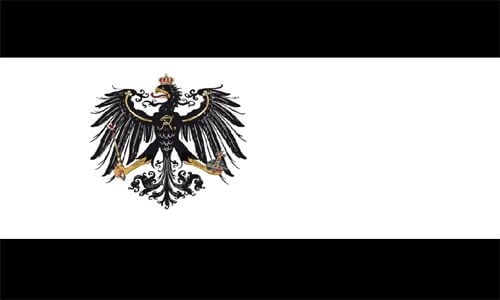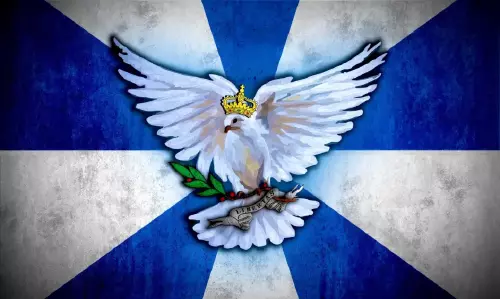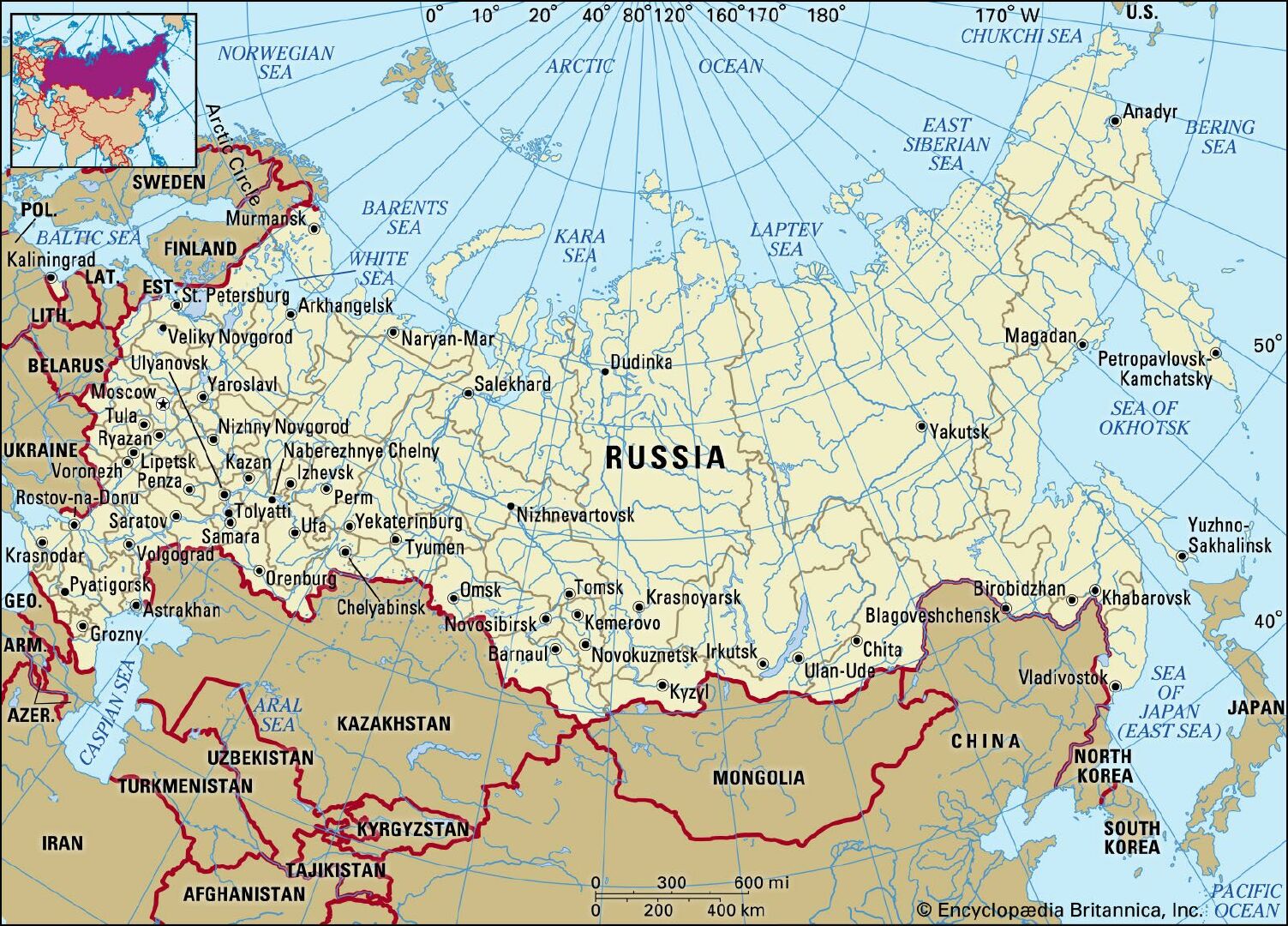| National Factbook |
| Flag: |

|
| Nation Name: |
Prussia |
| Leader Name: |
Frederick |
| Currency: |

Ruble |
| National Animal: |

Bear |
| History: |
The history of Russia begins with the histories of the East Slavs. The traditional start date of specifically Russian history is the establishment of the Rus' state in the north in 862, ruled by Varangians. In 882, Prince Oleg of Novgorod seized Kiev, uniting the northern and southern lands of the Eastern Slavs under one authority, moving the governance center to Kiev by the end of the 10th century, and maintaining northern and southern parts with significant autonomy from each other. The state adopted Christianity from the Byzantine Empire in 988, beginning the synthesis of Byzantine and Slavic cultures that defined Russian culture for the next millennium. Kievan Rus' ultimately disintegrated as a state due to the Mongol invasions in 1237–1240. After the 13th century, Moscow became a political and cultural magnet for the unification of Russian lands. By the end of the 15th century, many of the petty principalities around Moscow had been united with the Grand Duchy of Moscow, which took full control of its own sovereignty under Ivan the Great.
Ivan the Terrible transformed the Grand Duchy into the Tsardom of Russia in 1547. However, the death of Ivan's son Feodor I without issue in 1598 created a succession crisis and led Russia into a period of chaos and civil war known as the Time of Troubles, ending with the coronation of Michael Romanov as the first Tsar of the Romanov dynasty in 1613. During the rest of the seventeenth century, Russia completed the exploration and conquest of Siberia, claiming lands as far as the Pacific Ocean by the end of the century. Domestically, Russia faced numerous uprisings of the various ethnic groups under their control, as exemplified by the Cossack leader Stenka Razin, who led a revolt in 1670–1671. In 1721, in the wake of the Great Northern War, Tsar Peter the Great renamed the state as the Russian Empire; he is also noted for establishing St. Petersburg as the new capital of his Empire, and for his introducing Western European culture to Russia. In 1762, Russia came under the control of Catherine the Great, who continued the westernizing policies of Peter the Great, and ushered in the era of the Russian Enlightenment. Catherine's grandson, Alexander I, repulsed an invasion by the French Emperor Napoleon, leading Russia into the status of one of the great powers.
Peasant revolts intensified during the nineteenth century, culminating with Alexander II abolishing Russian serfdom in 1861. In the following decades, reform efforts such as the Stolypin reforms of 1906–1914, the constitution of 1906, and the State Duma (1906–1917) attempted to open and liberalize the economy and political system, but the emperors refused to relinquish autocratic rule and resisted sharing their power. A combination of economic breakdown, mismanagement over Russia's involvement in World War I, and discontent with the autocratic system of government triggered the Russian Revolution in 1917. The end of the monarchy initially brought into office a coalition of liberals and moderate socialists, but their failed policies led to the October Revolution. In 1922, Soviet Russia, along with the Ukrainian SSR, Byelorussian SSR, and Transcaucasian SFSR signed the Treaty on the Creation of the USSR, officially merging all four republics to form the Soviet Union as a single state. Between 1922 and 1991 the history of Russia essentially became the history of the Soviet Union.[opinion] During this period, the Soviet Union was one of the victors in World War II after recovering from a massive surprise invasion in 1941 by Nazi Germany, which had previously signed a non-aggression pact with the Soviet Union. The USSR's network of satellite states in Eastern Europe, which were brought into its sphere of influence in the closing stages of World War II, helped the country become a superpower competing with fellow superpower the United States and other Western countries in the Cold War.
By the mid-1980s, with the weaknesses of Soviet economic and political structures becoming acute, Mikhail Gorbachev embarked on major reforms, which eventually led to the weakening of the communist party and dissolution of the Soviet Union, leaving Russia again on its own and marking the start of the history of post-Soviet Russia. The Russian Soviet Federative Socialist Republic renamed itself as the Russian Federation and became the primary successor state to the Soviet Union. Russia retained its nuclear arsenal but lost its superpower status. Scrapping the central planning and state-ownership of property of the Soviet era in the 1990s, new leaders, led by President Vladimir Putin, took political and economic power after 2000 and engaged in an assertive foreign policy. Coupled with economic growth, Russia has since regained significant global status as a world power. Russia's 2014 annexation of the Crimean Peninsula led to economic sanctions imposed by the United States and the European Union. Russia's 2022 invasion of Ukraine led to significantly expanded sanctions. Under Putin's leadership, corruption in Russia is rated as the worst in Europe, and Russia's human rights situation has been increasingly criticized by international observers. |
| Geography |
| Continent: |
Asia |
| Land Area: |
347,617.44 sq. km |
| Terrain: |
Russia (Russian: Россия) is the largest country in the world, covering over 17,125,192 km2 (6,612,074 sq mi), and encompassing more than one-eighth of Earth's inhabited land area. Russia extends across eleven time zones, and has the most borders of any country in the world, with sixteen sovereign nations.
Russia is a transcontinental country stretching vastly over two continents, Europe and Asia. It spans the northernmost edge of Eurasia, and has the world's fourth-longest coastline, at 37,653 km (23,396 mi). Russia, alongside Canada and the United States, is one of only three countries with a coast along three oceans (however connection to the Atlantic Ocean is extremely remote), due to which it has links with over thirteen marginal seas. It lies between latitudes 41° and 82° N, and longitudes 19° E and 169° W. Russia is larger than three continents of the world, and has about the same surface area as Pluto.
Kaliningrad Oblast, westernmost part of Russia along the Baltic Sea, is about 9,000 km (5,600 mi) apart from its easternmost part, Big Diomede Island in the Bering Strait. This distance spans about 6,800 kilometres (4,200 mi), to Nome, Alaska.[clarification needed] From north to south, the country ranges from the northern tip of the Russian Arctic islands at Franz Josef Land to the southern tip of the Republic of Dagestan on the Caspian Sea, spanning about 4,500 kilometres (2,800 mi) of extremely varied, often inhospitable terrain.
Extending for 57,792 kilometres (35,910 mi), the Russian border is the world's longest. Along the 20,139-kilometre land frontier, Russia has boundaries with 14 countries: Poland and Lithuania (both via Kaliningrad Oblast), Norway, Finland, Estonia, Latvia, Belarus, Ukraine, Georgia, Azerbaijan, Kazakhstan, China, Mongolia, and North Korea.
Approximately two-thirds of the frontier is bounded by seawater. Virtually all of the lengthy northern coast is well above the Arctic Circle; except for the port of Murmansk—which receives currents that are somewhat warmer than would be expected at that latitude, due to the effects of the Gulf Stream—that coast is locked in ice much of the year. Thirteen seas and parts of two oceans—the Arctic and Pacific—wash Russian shores. It is separated by close sea, making it a maritime boundary. It also shares one with Japan.
With a few changes of status, most of the Soviet Union's administrative and territorial divisions of the Russian Republic were retained in constituting the Russian Federation. As of 2014, there were eighty-five administrative territorial divisions (called federal subjects): twenty-two republics, nine krais (territories), forty-six oblasts (provinces), one autonomous oblast, four autonomous okrugs, and three cities with federal status, namely the cities of Moscow, Saint Petersburg, and Sevastopol.
The republics include a wide variety of peoples, including northern Europeans, Tatars, Caucasus peoples, and indigenous Siberians. The largest federal subjects are in Siberia. Located in east-central Siberia, the Sakha Republic (Yakutia) is the largest federal subject in the country (and the largest country subdivision in the world), twice the size of Alaska. Second in size is Krasnoyarsk Krai, located west of Sakha in Siberia. Kaliningrad Oblast, which is a noncontiguous constituent entity of Russia, is the smallest oblast. The Republic of Ingushetia is both the smallest republic and the smallest federal subject of Russia except for the three federal cities. The two most populous federal subjects, Moscow Oblast (with Moscow) and Krasnodar Krai, are in European Russia. |
| Highest Peak: |
Mount Elbrus,
5,642 meters
|
| Lowest Valley: |
Caspian Sea,
-24 meters
|
| Climate: |
|
| People & Society |
| Population: |
12,906,422 people |
| Demonym: |
Russian |
| Demonym Plural: |
Russians |
| Ethnic Groups: |
- 0.0% |
| Languages: |
Russian - 0.0% |
| Religions: |
Eastern Orthodox - 0.0% |
| Health |
| Life Expectancy: |
0 years |
| Obesity: |
0% |
| Alcohol Users: |
0% |
| Tobacco Users: |
0% |
| Cannabis Users: |
0% |
| Hard Drug Users: |
0% |
| Economy |
| Description: |
|
| Average Yearly Income: |
$305.67 |
| Gross Domestic Product (GDP): |
$20,953,766,713.00 |
| GDP per Capita: |
$1,623.51 |
| Gross National Income (GNI): |
$15,973,436,600.00 |
| Industries: |
|
| Military |
| History: |
The Armed Forces of the Russian Federation (Russian: Вооружённые Си́лы Росси́йской Федера́ции, Vooružjonnyje Síly Rossíjskoj Federácii), commonly referred to as the Russian Armed Forces, are the military of Russia. In terms of active-duty personnel, they are the world's fifth-largest military force, with 1.15 million and at least two million reserve personnel. According to the United States' Central Intelligence Agency (CIA), "Russia plans to expand its active personnel force to 1.5 million by 2026, which will make it the third largest in the world, after China and India." The country has three primary branches of service: the Ground Forces, the Navy, and the Aerospace Forces, as well as two independent arms of service: the Strategic Rocket Forces and Airborne Forces. In addition, the Special Operations Forces Command was established in 2013, with an estimated strength in 2022 of 1,000, possibly with additional supporting staff. |
| Soldiers: |
108,000 |
| Tanks: |
27,250 |
| Aircraft: |
2,715 |
| Ships: |
1 |
| Missiles: |
0 |
| Nuclear Weapons: |
38 |
| Last Updated: 07/12/2024 03:51 am |


























